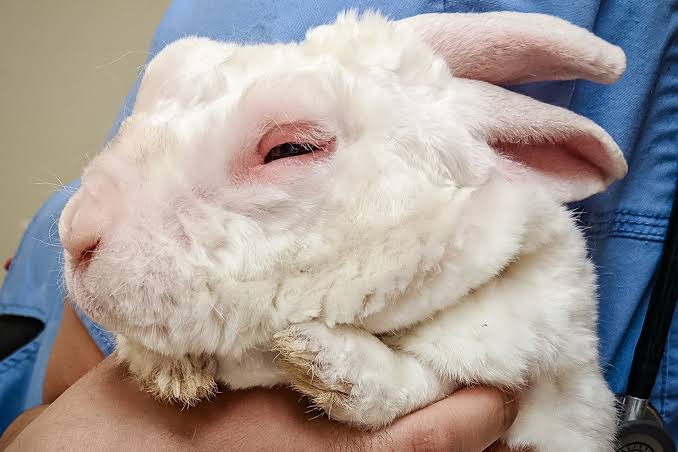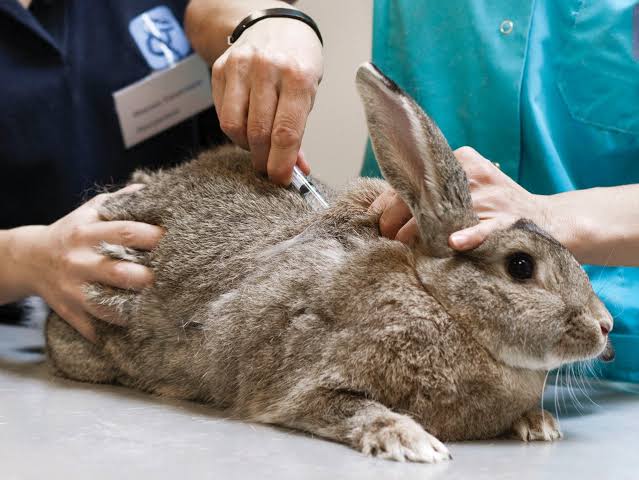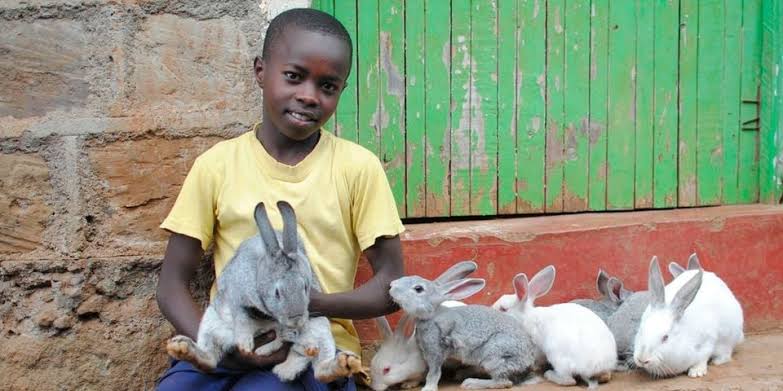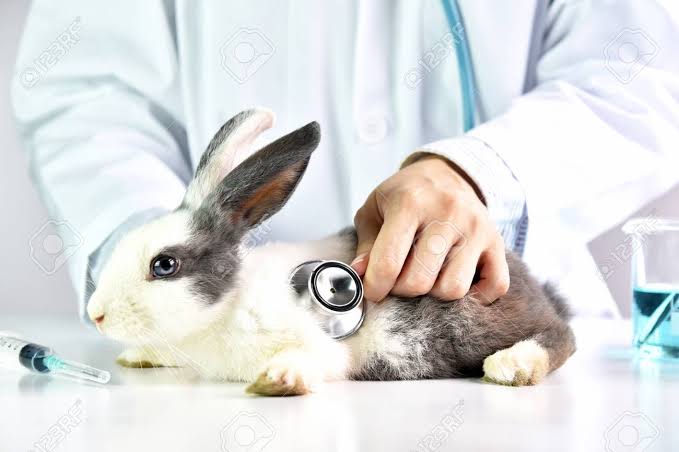Hello Hivers 📌💯

1. Rabbit Hemorrhagic Disease (RHD)
Cause
Rabbit Hemorrhagic Disease (RHD) is a highly contagious and often fatal disease caused by Rabbit Hemorrhagic Disease Virus (RHDV). There are two main strains: RHDV1 and RHDV2. The disease spreads through direct contact, contaminated food, water, bedding, and even insects.
Symptoms
Sudden death without visible symptoms
High fever and lethargy
Loss of appetite
Bloody discharge from the nose
Difficulty breathing
Convulsions before death
Control and Prevention
Vaccination is the most effective prevention method. Rabbits should be vaccinated against both RHDV1 and RHDV2.
Maintain strict biosecurity measures, including disinfecting cages, food bowls, and hands before handling rabbits.
Quarantine new or sick rabbits to prevent disease spread.
Avoid feeding wild plants that may be contaminated by infected wild rabbits.

2. Pasteurellosis (Snuffles)
Cause
Pasteurellosis, commonly known as "snuffles," is caused by Pasteurella multocida, a bacterium that affects the respiratory system of rabbits. It spreads through direct contact, contaminated cages, and airborne particles.
Symptoms
Sneezing and nasal discharge (white or yellow)
Watery eyes and crusty eye discharge
Difficulty breathing and wheezing
Abscesses in various parts of the body
Head tilt in severe cases (if the infection spreads to the inner ear)
Control and Prevention
Early detection and antibiotic treatment (prescribed by a veterinarian) can help manage the infection.
Keep the rabbit’s environment clean and dry to reduce bacterial growth.
Quarantine sick rabbits to prevent transmission.
Avoid overcrowding, as stress can weaken the immune system and make rabbits more susceptible.
3. Ear Mites (Psoroptes cuniculi)
Cause
Ear mites in rabbits are caused by Psoroptes cuniculi, a parasitic mite that infests the ears, leading to severe irritation and infections. It spreads through direct contact with infected rabbits, contaminated bedding, and cages.
Symptoms
Excessive scratching of ears and head shaking
Thick, crusty scabs inside the ears
Loss of fur around the ears
Secondary bacterial infections if untreated
Control and Prevention
Use prescribed mite treatments such as ivermectin or selamectin.
Clean and disinfect cages and bedding regularly.
Quarantine and treat any new rabbits before introducing them to a group.

#4. Coccidiosis
Cause
Coccidiosis is caused by Eimeria species, a type of protozoan parasite that affects the intestines and liver of rabbits. It spreads through contaminated food, water, and feces.
Symptoms
Diarrhea, sometimes with blood or mucus
Weight loss and poor growth
Swollen abdomen in severe liver infections
Lethargy and dehydration
Control and Prevention
Keep cages, food, and water clean to prevent fecal contamination.
Provide a well-balanced diet to strengthen the rabbit’s immune system.
Use anticoccidial medications if an outbreak occurs (under veterinary guidance).
Avoid overcrowding and maintain good hygiene in rabbit housing.
#5. Encephalitozoonosis (E. cuniculi)
Cause
This disease is caused by Encephalitozoon cuniculi, a microsporidian parasite that affects the kidneys and nervous system of rabbits. It spreads through urine and contaminated food or water.
Symptoms
Head tilt (wry neck)
Loss of balance and rolling
Seizures or paralysis
Cataracts and blindness
Increased drinking and urination (kidney damage)
Control and Prevention
Routine screening and early treatment with antiparasitic medications like fenbendazole can help control the disease.
Keep food and water clean to prevent contamination.
Quarantine and test new rabbits before introducing them to a colony.
6. Bloat (Gastrointestinal Stasis)

Cause
Bloat or gastrointestinal (GI) stasis occurs when the digestive system slows down or stops working due to stress, dehydration, lack of fiber, or an underlying illness.
Symptoms
Loss of appetite
Swollen, hard abdomen
Lethargy and hunched posture
Decreased or no fecal output
Teeth grinding due to pain
Control and Prevention
Provide a high-fiber diet with plenty of fresh hay to maintain gut motility.
Ensure rabbits have access to fresh water at all times.
Encourage exercise to keep the digestive system active.
Reduce stress and sudden dietary changes.
Seek immediate veterinary care if symptoms appear, as GI stasis can be fatal if untreated.
7. Sore Hocks (Pododermatitis)
Cause
Sore hocks (pododermatitis) occur when the rabbit’s feet develop pressure sores due to prolonged contact with hard or wet surfaces. Overweight rabbits and those with poor hygiene are at higher risk.
Symptoms
Red, inflamed sores on the underside of the feet
Hair loss and crusty skin on hocks
Lameness and reluctance to move
Secondary bacterial infections in severe cases
Control and Prevention
Provide soft, dry bedding like hay or straw. Avoid wire flooring.
Keep cages clean and dry to prevent infections.
Regularly check and trim overgrown nails, which can put extra pressure on the feet.
Treat mild cases with antiseptic solutions and bandages. Severe cases may require veterinary care.
8. Dental Disease (Malocclusion)
Cause
Rabbit teeth grow continuously, and if they do not wear down properly due to a poor diet, malocclusion (misalignment) can occur. This leads to overgrown teeth and painful eating difficulties.
Symptoms
Drooling and wet chin
Difficulty eating and weight loss
Overgrown front teeth (incisors)
Swelling around the jaw due to dental abscesses
Control and Prevention
Provide high-fiber diets, including hay, which naturally wears down teeth.
Avoid feeding too many soft foods, such as pellets and fruits.
Regularly check teeth for signs of overgrowth.
Seek veterinary trimming if teeth become overgrown.
Conclusion 👍
Rabbits are prone to a variety of diseases, many of which can be prevented through proper care, hygiene, and vaccination. The key to maintaining healthy rabbits includes:
Routine health checks to detect early signs of illness.
Proper nutrition, emphasizing hay and fiber for digestive and dental health.
Clean and dry living conditions to prevent infections.
Regular vaccinations against deadly diseases like myxomatosis and RHD.
Immediate veterinary attention when symptoms of disease appear.
By implementing these preventive measures and acting quickly when problems arise, rabbit owners can ensure the well-being of their animals, whether they are kept as pets or for commercial purposes.
Thanks for following through
Ben.
I've never raised rabbits myself but this is super informative. Thanks for sharing
You are welcome my friend
@tipu curate
Upvoted 👌 (Mana: 25/45) Liquid rewards.